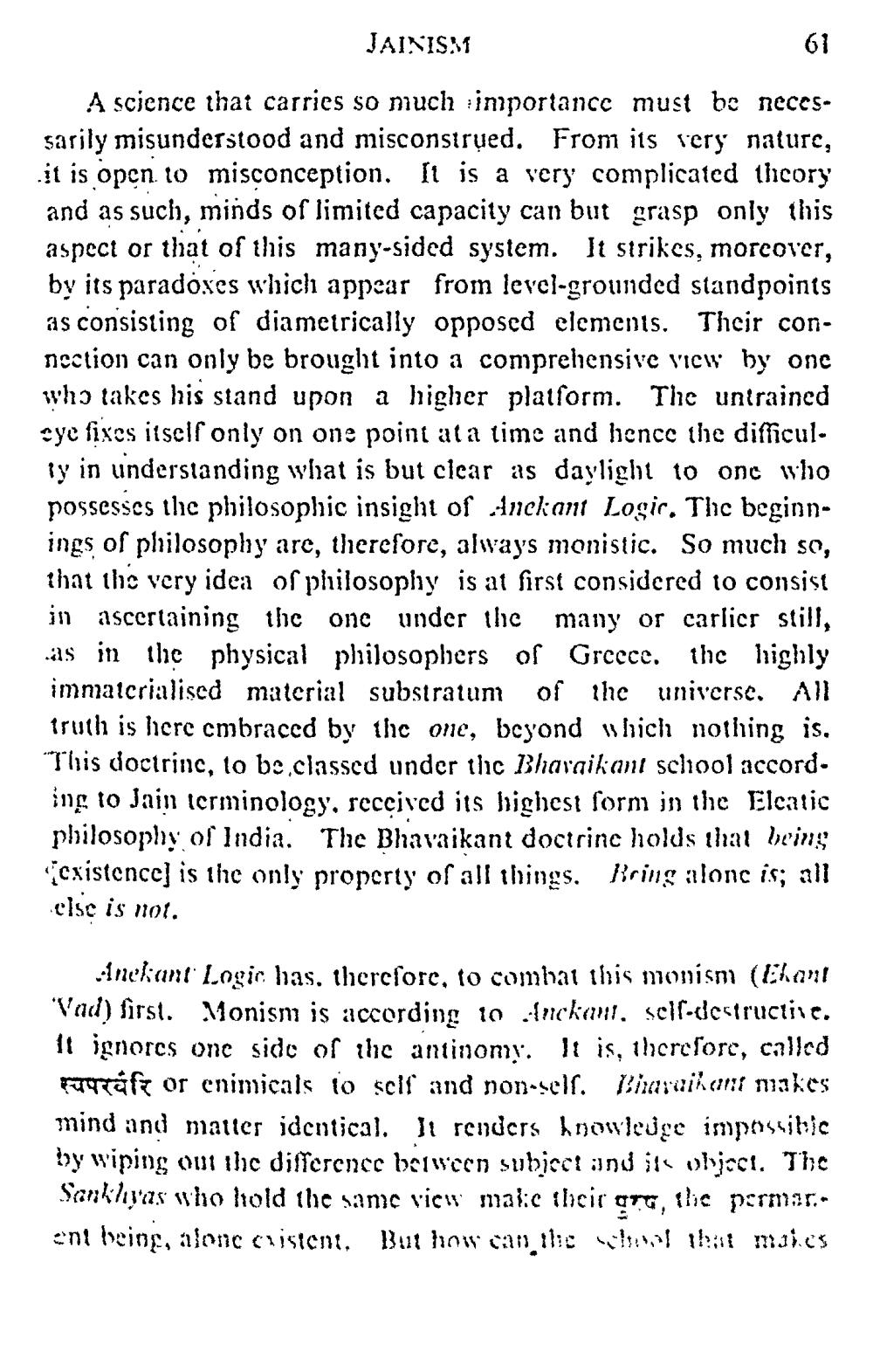________________
JAINISS1
61
A science that carries so much importance must be necessarily misunderstood and misconstrued. From its very nature, it is open to misconception. It is a very complicated thicory and as such, minds of limited capacity can but grasp only this aspect or that of this many-sided system. It strikes, morcover, by its paradoxes which appear from level-grounded standpoints as consisting of diametrically opposed elements. Their conncction can only be brought into a comprehensive view hy onc who takes his stand upon a higher platform. The untrained cye fixes itself only on one point at a time and hence the difficul. Ty in understanding what is but cicar as daylight to onc who possesses the philosophic insight of Anckani Logic. Thc beginnings of philosophy are, therefore, always monistic. So much so, that the very idea of piilosophy is at first considered to consist in ascertaining the one under the many or carlicr still, as in the physical philosophers of Greece. the highly immatcrialised matcrial substratum of the universe. All truth is licre embraced by the one, beyond which nothing is. "This doctrinc, to be classed under tlic Bhavaikant school accord. ing to Jain tcrminology, received its highest form in the Elcalic philosophy of India. The Bhavaikant doctrinc holds that being cxistcnce) is the only property of all things. Bring alonc is; all else is not.
Inekant Logir has, therefore, to combat this monism (Ehani Vad) first. Honism is according 10 Inchal, self-destructive. 11 ignorcs one side of the antinonix. It is, therefore, called curtaft or enimicals to scil and non-self. Biaraikaní makes mind and matter identical. li renders knowleuge impossibic by wiping out the difference between subicct ind ik oljaci. The Sankhyas who told the same vieur malic incir ara, the permar.. ent being, alone custent. But how can thic shed the maies




